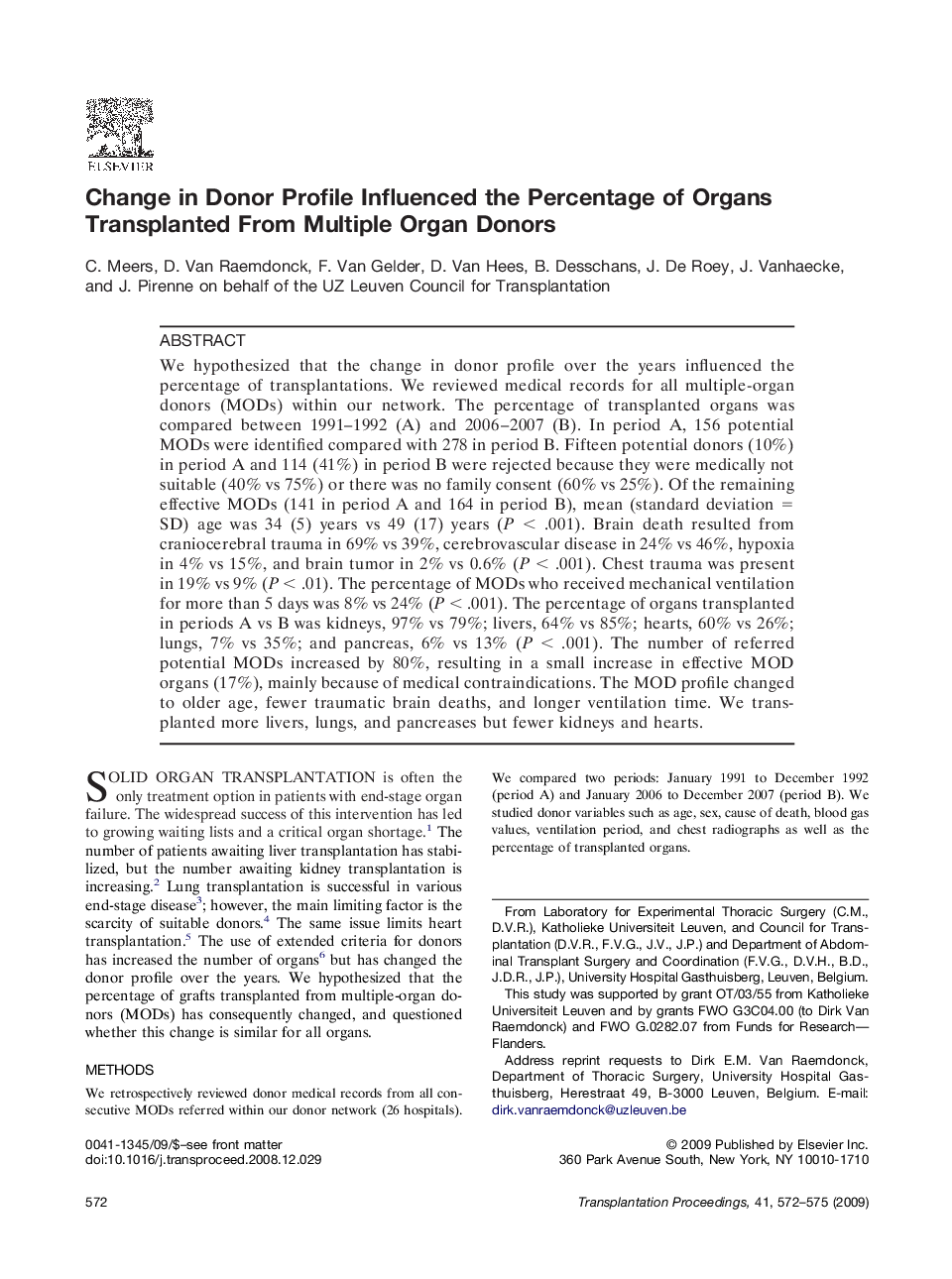| Article ID | Journal | Published Year | Pages | File Type |
|---|---|---|---|---|
| 4259521 | Transplantation Proceedings | 2009 | 4 Pages |
Abstract
We hypothesized that the change in donor profile over the years influenced the percentage of transplantations. We reviewed medical records for all multiple-organ donors (MODs) within our network. The percentage of transplanted organs was compared between 1991-1992 (A) and 2006-2007 (B). In period A, 156 potential MODs were identified compared with 278 in period B. Fifteen potential donors (10%) in period A and 114 (41%) in period B were rejected because they were medically not suitable (40% vs 75%) or there was no family consent (60% vs 25%). Of the remaining effective MODs (141 in period A and 164 in period B), mean (standard deviation = SD) age was 34 (5) years vs 49 (17) years (P < .001). Brain death resulted from craniocerebral trauma in 69% vs 39%, cerebrovascular disease in 24% vs 46%, hypoxia in 4% vs 15%, and brain tumor in 2% vs 0.6% (P < .001). Chest trauma was present in 19% vs 9% (P < .01). The percentage of MODs who received mechanical ventilation for more than 5 days was 8% vs 24% (P < .001). The percentage of organs transplanted in periods A vs B was kidneys, 97% vs 79%; livers, 64% vs 85%; hearts, 60% vs 26%; lungs, 7% vs 35%; and pancreas, 6% vs 13% (P < .001). The number of referred potential MODs increased by 80%, resulting in a small increase in effective MOD organs (17%), mainly because of medical contraindications. The MOD profile changed to older age, fewer traumatic brain deaths, and longer ventilation time. We transplanted more livers, lungs, and pancreases but fewer kidneys and hearts.
Related Topics
Health Sciences
Medicine and Dentistry
Surgery
Authors
C. Meers, D. Van Raemdonck, F. Van Gelder, D. Van Hees, B. Desschans, J. De Roey, J. Vanhaecke, J. Pirenne, UZ Leuven Council for Transplantation UZ Leuven Council for Transplantation,
